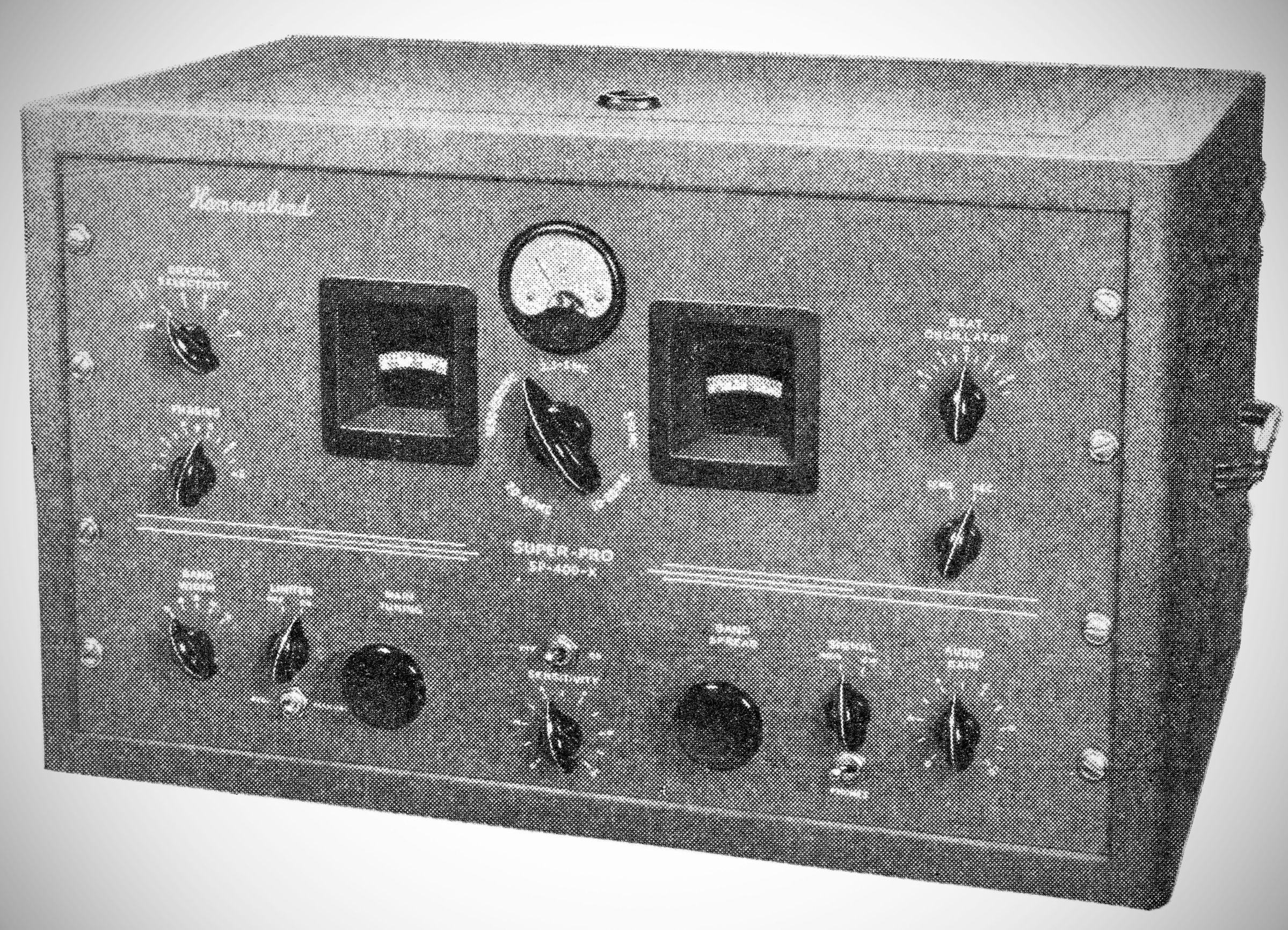Note
QST, Feb 1946, p. 81.
Radio News, Nov 1946, p. 101. (with price)
Lafayette catalog number 88 (1947, copyright 1946), p. 98.
Concord catalog 9-47, p. 153.
Hammarlund's first post-war receiver.
The Hammarlund SP-400, introduced in 1946, stands as a pivotal but often less celebrated bridge in the illustrious "Super-Pro" lineage. Arriving in the immediate aftermath of World War II, it represented Hammarlund's effort to transition from wartime production of the ubiquitous SP-200 series back to a civilian and commercial market, while also incorporating lessons learned from the intense demands of the conflict. While its production run was comparatively shorter than its wartime predecessor or its legendary successor, the SP-600, the SP-400 played a crucial role in maintaining Hammarlund's dominance in the high-performance communications receiver market during a period of significant industry transition.
Post-War Context and Design Philosophy:
The immediate post-war period was a complex time for radio manufacturers. On one hand, there was a pent-up demand for civilian electronics. On the other hand, the market was flooded with vast quantities of surplus military equipment, including thousands of Hammarlund's own SP-200 (BC-779/BC-794) receivers, which were now available at bargain prices. This presented a unique challenge for selling new, higher-priced equipment.
Despite this, Hammarlund pressed forward with the SP-400, demonstrating confidence in its continued innovation. The design philosophy was to maintain the core "Super-Pro" principles of quality construction, high sensitivity, and exceptional selectivity, while likely seeking to streamline production and potentially incorporate minor design advancements based on wartime experience. It remained a single-conversion superheterodyne receiver with a 465 kHz Intermediate Frequency (IF), a testament to the enduring effectiveness of that fundamental design.
Key features and differences from the SP-200:
While the SP-400 shared a strong familial resemblance to the SP-200, it introduced several key differences and refinements:
Updated Aesthetic and Chassis Layout: The SP-400 featured a slightly updated front panel aesthetic compared to the SP-200. Internally, while the core architecture was similar, there were often minor re-arrangements of components and wiring for potentially improved manufacturability or serviceability. The receiver unit remained substantial and heavy, reflecting its durable construction.
Continued Use of All-Metal Tubes: Building on the SP-200's successful transition, the SP-400 continued the exclusive use of all-metal tubes (e.g., 6K7, 6L7, 6J5, 6H6, 6F6) in its RF, IF, and audio stages. This ensured the excellent shielding, stability, and ruggedness that had become a hallmark of the Super-Pro line.
Standardized Crystal Filter: Like the SP-200, the SP-400 typically included a crystal filter as a standard feature on its main models (e.g., SP-400-X). This allowed for the characteristic razor-sharp selectivity essential for professional and amateur CW reception, complete with the phasing control to eliminate interfering signals.
Variable Selectivity (Bandwidth Control): The SP-400 maintained the highly effective continuously variable IF bandwidth control (3–16 kHz), achieved through adjustable coupling of the IF transformers. This remained a core strength of the Super-Pro design, offering operators fine-grained control over signal filtering.
The primary commercial versions were:
SP-400-X: Covering 0.54 MHz to 30 MHz in five bands. This range was well-suited for general shortwave listening, international broadcasting, and the popular amateur radio bands.
SP-400-SX: Extending coverage to higher frequencies, typically 1.25 MHz to 40 MHz.
Rack mount version available.
Selectivity: 6, 4, 2, 1, and 0.5 kHz (-6dB)
Modes: AM/ CW-SSB
Features: 1/4" headphone jack, S meter, bandspread, sensitivity, ANL, BFO, speaker terminals (or rear panel), phono input terminals (on rear panel, as access to the audio amplifier for an external device), AVC on/off
Power: 105–125 VAC, 50/60 Hz
Separate Power Supply: The heavy, external power supply remained a fundamental design choice, ensuring optimal performance by keeping heat and electromagnetic interference away from the sensitive receiver circuitry.
Powerful Audio Output: The push-pull 6F6 audio output stage continued to provide a strong and clear audio signal, capable of driving an external loudspeaker with fidelity.
S-Meter: A clear analog S-meter was standard on the front panel, providing a visual indication of received signal strength for accurate tuning.
Tube Lineup:
The tube lineup for the SP-400 was very similar to the later production SP-200 models, featuring 16 tubes on the main chassis and 2 in the power supply, for a total of 18 tubes.
6K7 (1st RF amp)
6K7 (2nd RF amp)
6L7 (1st detector/mixer)
6J7 (HF osc)
6K7 (1st IF amp)
6SK7 (2nd IF amp)
6SK7 (3rd IF amp)
6H6 (2nd detector)
6N7 (noise limiter)
6SJ7 (BFO)
6SK7 AVC amp,
6H6 (AVC rectifier)
6J5 (1st AF amp)
6F6 (2nd AF amp)
(2) 6F6 (push-pull AF amp)
Power Supply
5U4G (high voltage rectifier)
5Y3 (bias rectifier)
Production Run and Legacy:
The SP-400 had a relatively short production life, roughly from 1946 to 1948. This was partly due to the surplus market, but also because Hammarlund was already developing its next-generation receiver, the SP-600, which would eventually become the longest-running and most produced Super-Pro model.
Despite its brevity, the SP-400 successfully bridged the gap between the wartime production model and the new era of communications. It demonstrated Hammarlund's commitment to continuous improvement and its ability to adapt its iconic Super-Pro design to post-war market conditions. While perhaps not as famous as the wartime SP-200 or the long-lived SP-600, the SP-400 remains a highly capable and desirable receiver for collectors and enthusiasts who appreciate its quality construction and excellent performance, representing a unique moment in Hammarlund's storied history.
